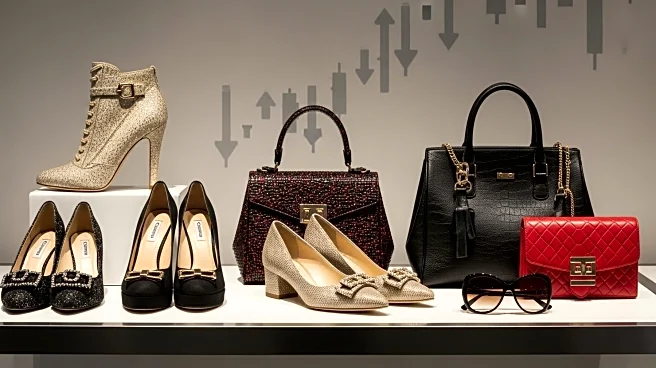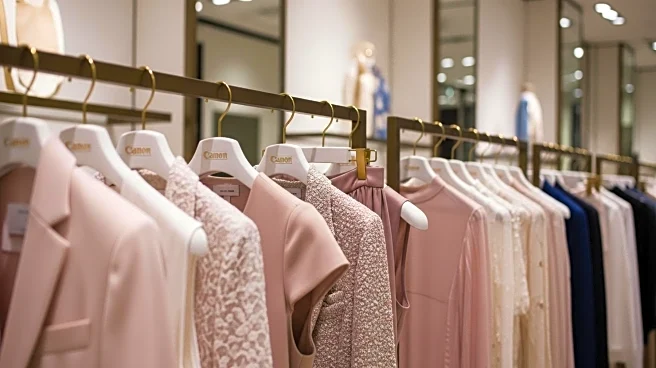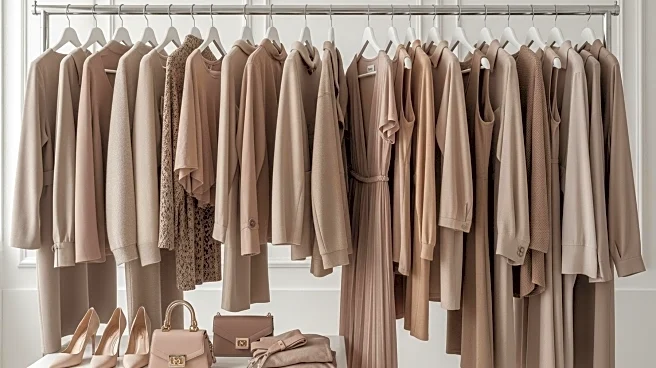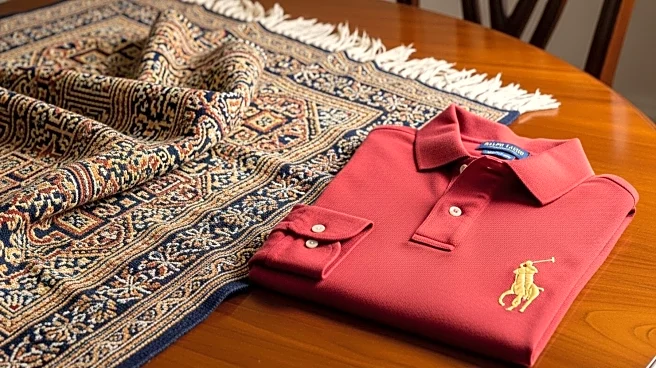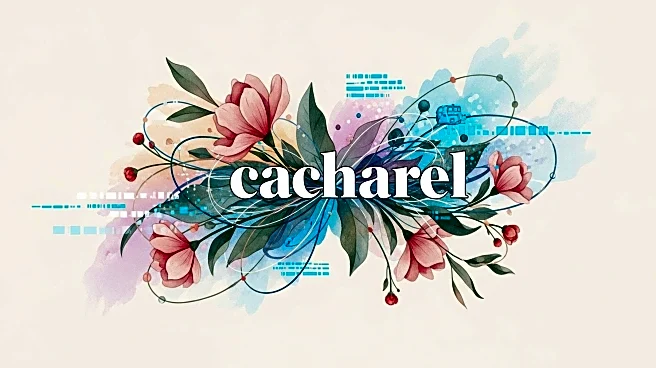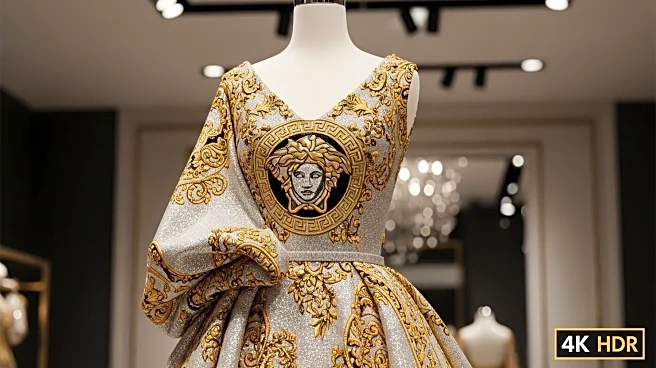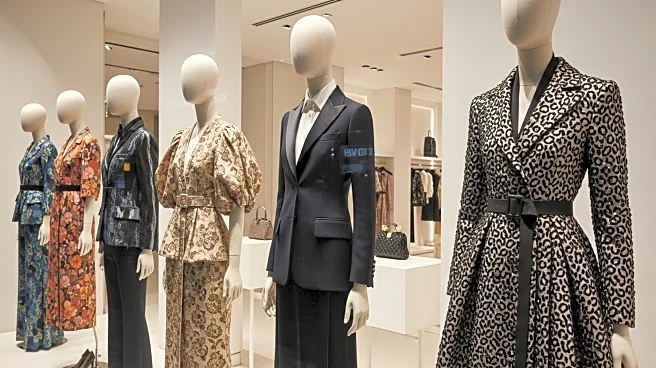What's Happening?
Fashion companies are navigating a complex landscape marked by tariffs, price hikes, and a shift towards direct-to-consumer (DTC) models. Brands like Lafayette 148, L'Agence, Ramy Brook, Cinq à Sept, and LoveShackFancy are adapting their strategies to address these challenges. Lafayette 148 is focusing on enhancing customer experiences and expanding its retail presence, while L'Agence is leveraging a multichannel approach to boost growth. Ramy Brook is expanding its product lines and maintaining retail pricing despite tariff pressures. Cinq à Sept is exploring international markets and expanding its denim offerings, and LoveShackFancy is opening new stores and launching new product categories. These companies are also investing in technology and supply chain diversification to mitigate the impact of tariffs and economic uncertainties.
Why It's Important?
The fashion industry's response to tariffs and economic pressures is crucial as it affects pricing, consumer access, and overall market dynamics. Companies that successfully navigate these challenges can maintain or even enhance their market positions. The shift towards DTC models reflects a broader trend in retail, emphasizing the importance of direct consumer relationships and data-driven strategies. This transition can lead to increased profitability and brand loyalty. However, the ongoing uncertainty around tariffs and economic conditions poses risks, potentially affecting supply chains and pricing strategies. The industry's ability to adapt will influence its resilience and growth prospects in a volatile economic environment.
What's Next?
Fashion companies are likely to continue expanding their DTC channels and exploring international markets to offset domestic challenges. Investments in technology and supply chain diversification will be critical as they seek to enhance operational efficiency and customer engagement. The industry will also need to monitor tariff developments closely, adjusting strategies as necessary to maintain competitiveness. As companies open new stores and launch new product lines, they will need to balance growth with maintaining brand identity and customer experience. The success of these strategies will depend on their ability to adapt to changing market conditions and consumer preferences.
Beyond the Headlines
The fashion industry's strategic shifts highlight broader economic and cultural trends, including the increasing importance of sustainability and ethical sourcing. As companies diversify their supply chains, they may face ethical considerations related to labor practices and environmental impact. The emphasis on DTC models also reflects changing consumer behaviors, with shoppers seeking more personalized and direct interactions with brands. These developments could lead to long-term shifts in how fashion companies operate and engage with their customers, potentially influencing industry standards and practices.
